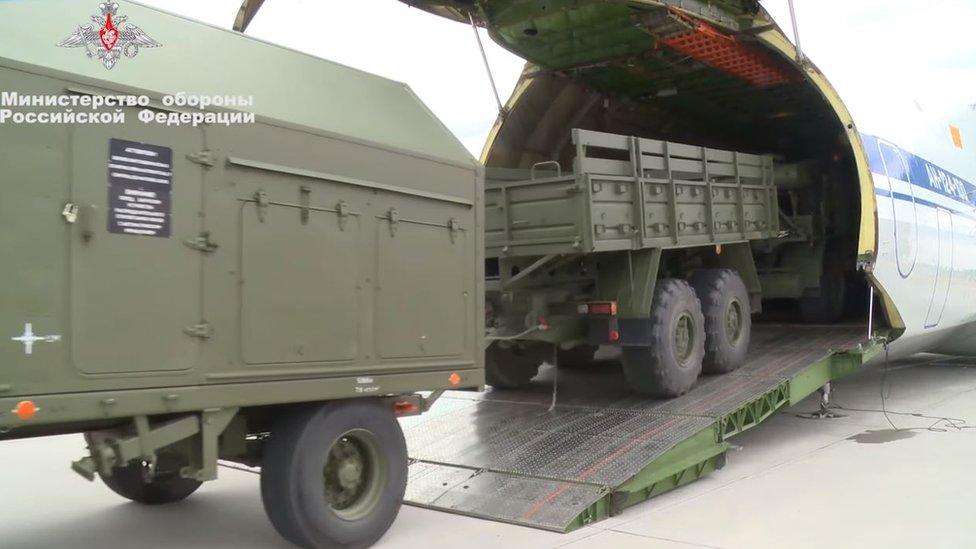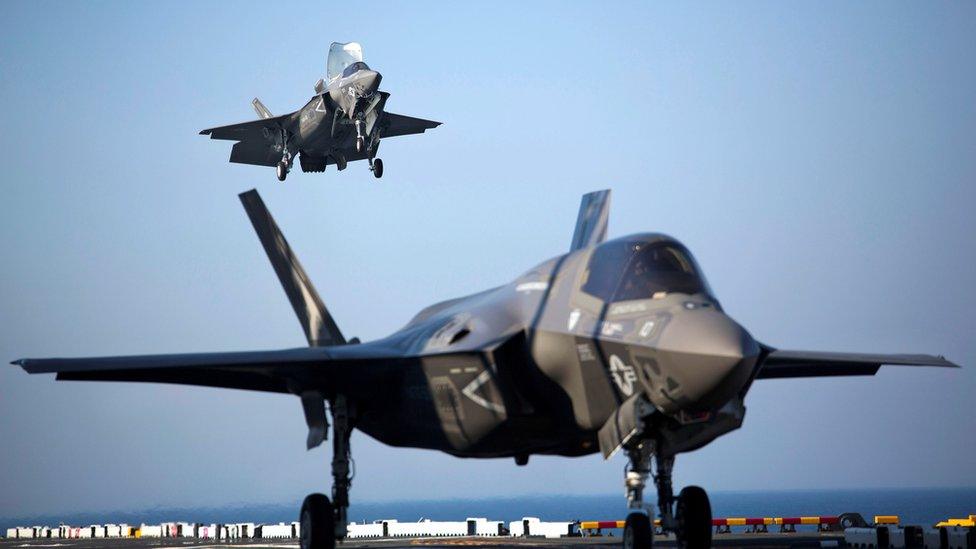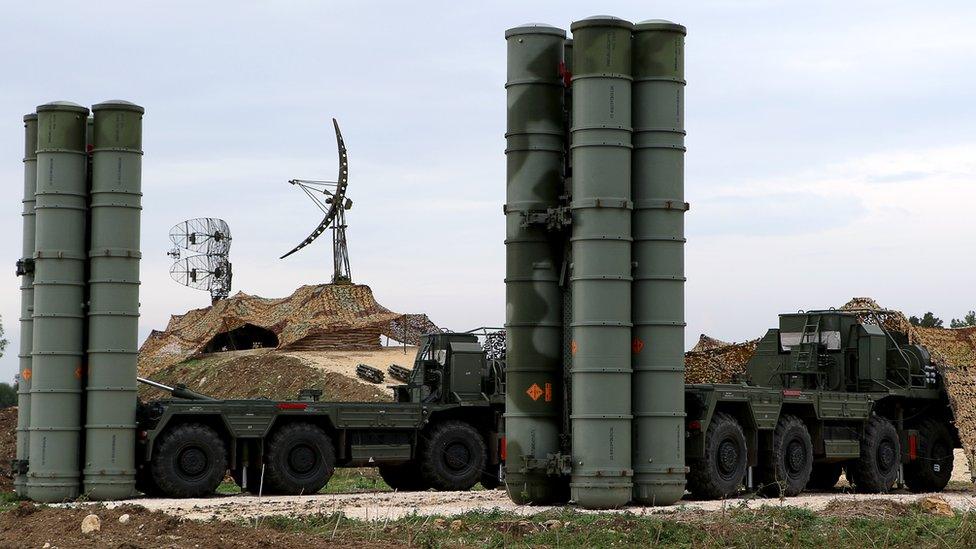US removes Turkey from F-35 fighter jet programme
- Published
A demonstration of the S-400 missile system
The US says it is removing Turkey from its F-35 fighter jets programme, after Ankara received the first parts of a Russian missile defence system.
The US says the "F-35 cannot coexist with a Russian intelligence collection platform that will be used to learn about its advanced capabilities".
Russia began delivering its advanced S-400 system to Turkey last week.
Turkey and the US are key Nato allies - but Ankara has also been establishing closer links with Russia.
Turkey has so far not publicly reacted to the latest US move, which was widely expected.
What did the US say?
In a statement on Wednesday, White House spokeswoman Stephanie Grisham said: "Unfortunately, Turkey's decision to purchase Russian S-400 air defence systems renders its continued involvement with the F-35 impossible.
"The United States has been actively working with Turkey to provide air defence solutions to meet its legitimate air defence needs, and this administration has made multiple offers to move Turkey to the front of the line to receive the US Patriot air defence system.
"Turkey has been a longstanding and trusted partner and Nato ally for over 65 years, but accepting the S-400 undermines the commitments all Nato allies made to each other to move away from Russian systems."
At the same time Ms Grisham stressed that "the United States still greatly values our strategic relationship with Turkey.
"As Nato allies, our relationship is multi-layered, and not solely focused on the F-35," she said.


Turkey's President Recep Tayyip Erdogan believed that President Trump would ultimately allow him to have both the Russian S-400 missile system and F-35 US warplanes. But he was wrong.
Could things get worse ? Will Turkey's suspension from the F-35 programme be followed up by other measures ? The 2017 Countering America's Adversaries Through Sanctions Act mandates action against any country making significant purchases from the Russian defence industry. The big question now is how much damage will this do to bilateral ties between Washington and Ankara and more broadly between Turkey and Nato.
There is already a sense in the alliance that Turkey is drifting away from the West, flirting with Russia and pursuing a kind of authoritarian democracy at odds with liberal values. So is this a temporary shift in Ankara's outlook or a more significant turning point in Turkish foreign policy?

What's the argument about?
Turkey had signed up to buying 100 F-35s, America's most sophisticated warplanes, and had invested heavily in the US programme. Turkish companies produce 937 of the plane's parts.
But Turkey has also pursued an increasingly independent defence policy amid strained ties with the US and Europe.
It has purchased Russia's advanced S-400 air defence system for $2.5bn (£2bn) and sent members of its armed forces to Russia for training.

The Russian defence ministry has published footage of what it says are the first components of the system being delivered to Turkey
Turkey had also argued that the US was slow to offer an alternative missile defence shield.
US defence officials say the S-400 is incompatible with the wider Nato air-defence system in the region.
They say they do not want F-35s to be near S-400 systems because they fear Russian technicians will be able to access the warplane's vulnerabilities.
How important is Turkey?
Turkey has the second-largest army in Nato, a 29-member military alliance.
It is one of the US's key allies, and is located in a strategic position, sharing borders with Syria, Iraq and Iran.
It has also played an important role in the Syria conflict, providing arms and military support to some rebel groups.
However, it has seen relations deteriorate with some Nato members and the EU, who have accused Mr Erdogan of adopting an increasingly authoritarian style following a failed coup in 2016.
Nato explained in 80 seconds

How does the S-400 work?

Long-range surveillance radar tracks objects and relays information to command vehicle, which assesses potential targets
Target is identified and command vehicle orders missile launch
Launch data are sent to the best placed launch vehicle and it releases surface-to-air missiles
Engagement radar helps guide missiles towards target

- Published12 July 2019
- Published9 June 2019

- Published12 September 2017
